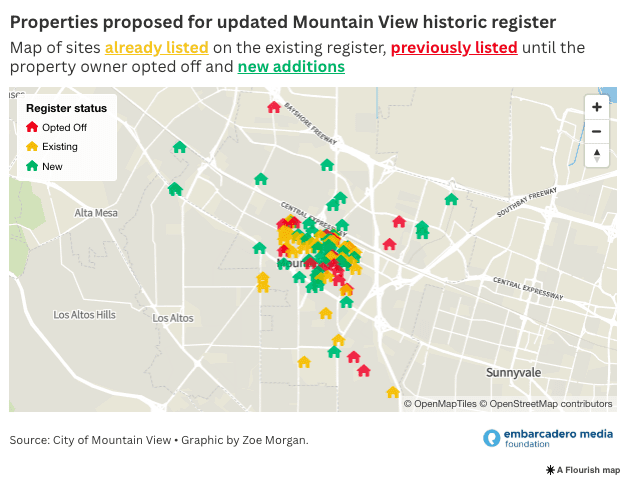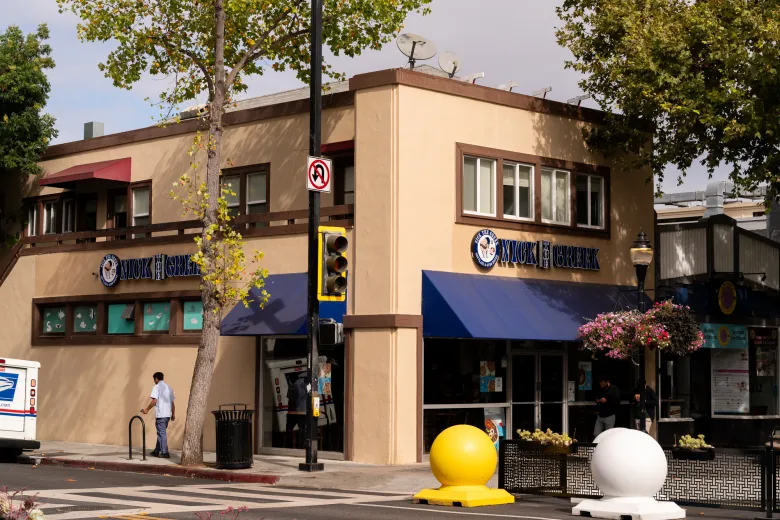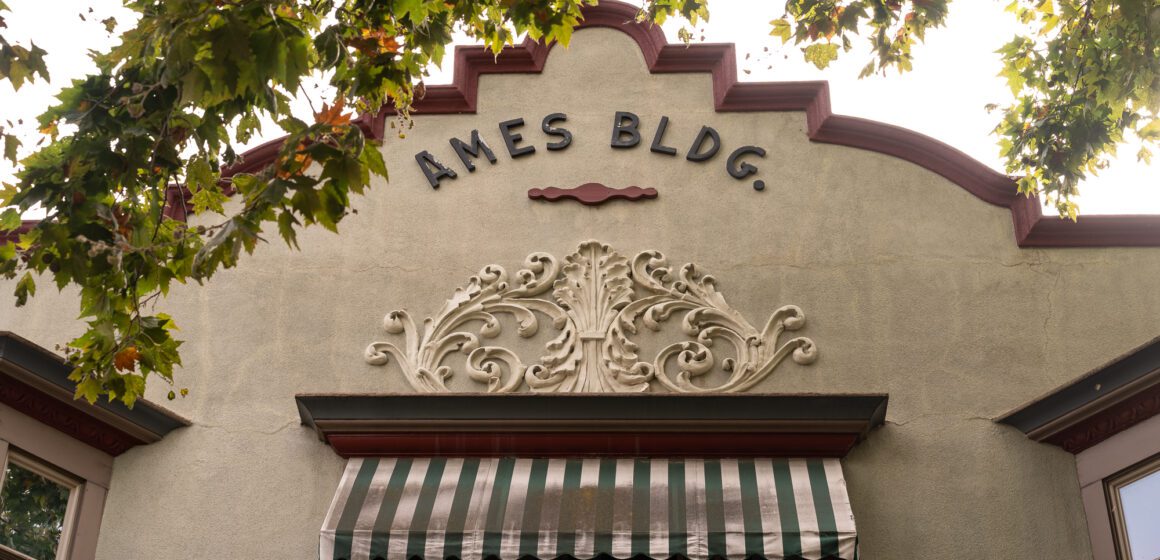Mountain View is taking steps to update its historic preservation ordinance to protect more historically significant properties, including putting dozens of previously unlisted properties on the city’s register of historic resources.
The Environmental Planning Commission weighed in on staff recommendations to streamline the eligibility criteria and review process for nominating, listing and delisting properties of historical significance at an Oct. 1 meeting. The commissioners supported a staff proposal to stop allowing property owners to “opt off” the city’s register, while also wanting the city to provide more incentives for owners to list their properties willingly.
“It shouldn’t be a drag to end up having your building named historic or being put on a historic list,” Commissioner Hank Dempsey said. “If there’s so many people that want to opt off that we have to prohibit it, that means the incentives are out of alignment.”

In 2004, the city adopted a historic preservation ordinance with the intent of preserving historically and culturally significant buildings, as well as maintaining the look and feel of certain neighborhoods. The ordinance stipulates particular procedures that owners must follow when they want to make modifications or improvements to historically designated buildings. It also provides access to incentives, like property tax reductions, to encourage owners to maintain their properties.
But even early on, many owners did not want their buildings on the register, despite their eligibility. A historic designation was seen as an impediment to future redevelopment, which could reduce a property’s resale value. This turned out to be the case for Chez TJ restaurant owner George Aviet who was stymied when trying to sell his property to a developer in 2017 because of its historic status.
Currently, there are 46 properties on the city’s register, while 93 were originally listed in 2004, according to the staff report.
Properties that have opted off may still be eligible for historic status under national and state registries, and subject to environmental review under state laws, like the California Environmental Quality Act. However, these properties aren’t eligible for tax incentives available through the local registry.
As part of the ordinance update, the city hired a consultant to conduct an intensive survey of private properties in Mountain View that could be eligible for historic designation. The consultant came up with a list of 101 sites, the majority of which are residential and largely clustered in the Old Mountain View and Shoreline West neighborhoods. The list also includes commercial, religious, educational and agricultural properties.
The commissioners expressed support for the historic designation of all 101 properties, while also voicing concern about whether property owners were aware of their eligibility.
“As part of my acceptance of this list of sites is the feedback that staff need to reach out to every single one of these property owners and say, ‘Yo, you’re on the list,” Commissioner Bill Cranston said. “‘And you know, if you want more information, here’s where you find it.’”
Eric Anderson, the city’s advanced planning manager, said that staff had sent letters to every property owner informing them of their eligibility.
“We haven’t heard from everybody, so we can’t confirm that it’s gotten to the right person but we’ve done everything that we can do to notify them,” he said.
Anderson added that owners have until Dec. 1 to make comments about their property’s historic designation, which will be taken into consideration for the final list submitted to the City Council for approval.
Increasing the appeal of the historic register

The commissioners also urged the city to make the historic register more compelling for property owners to join, given that so many have opted off in the past. They pushed staff to consider more financial incentives, in addition to the Mills Act, a state law that provides some tax relief for owners in exchange for maintaining a historic property.
The commissioners also encouraged staff to give more flexibility to five properties that the city is considering taking off the register since they do not meet historic integrity standards, according to the staff report. The five properties are 142-156 Castro St. (Rogers Building), 336 Mariposa Ave. (Camp Residence), 298 Castro St. (Scarpa’s Meat Market), 1643 Villa St., and 1076 Wright Ave. (Eaton-Manfredi House).
The commission recommended that the city take a more proactive approach with the property owners to help them restore and rehabilitate their buildings, especially in the downtown area, and provide a longer time period to complete the work, up to seven years.
Cranston also questioned how the city would deal with owners who deliberately run down their properties to get them off the historic register.
“I don’t like that negligence could be a reason that something becomes delisted,” he said, a point supported by other commissioners.
Livable Mountain View, a historic preservation advocacy group, weighed in on the ordinance as well at Wednesday’s meeting, generally supporting the recommended updates. Group members also urged the city to establish a historic retail district in the downtown area, covering the 100, 200 and 300 blocks of Castro Street, as well as buildings on Villa Street and Dana Street.
“Formal status is essential because current impending state legislation provides no protections at all for historic properties and districts that are not designated such formally by the local government,” said Robert Cox, a Livable Mountain View steering committee member.
The group opposed SB 79, a recently-passed state bill that’s currently awaiting Gov. Gavin Newsom’s signature and would allow for multifamily housing near major transit stops. This would include the Mountain View Transit Center, which is located next to the proposed historic retail district.
While no historic district currently exists in Mountain View, the ordinance opens the door for the possibility of one to be established. The staff report describes a process by which a neighborhood could be nominated as a historic district, provided that at least 50% of contributing owners were included as signatories in the application.
Anderson noted that in most cases a historic district is a bounded geographic area with about two thirds of the properties meeting the historic criteria. Ultimately, though, it is up to the City Council to decide whether a district is formally created or not, he said.
The City Council is expected to review the ordinance updates at its Nov. 18 meeting. The item would then return to the council for final action next year, according to the staff report.
This story originally appeared in the Mountain View Voice. Emily Margaretten joined the Mountain View Voice in 2023 as a reporter covering City Hall.



Leave a Reply
You must be logged in to post a comment.